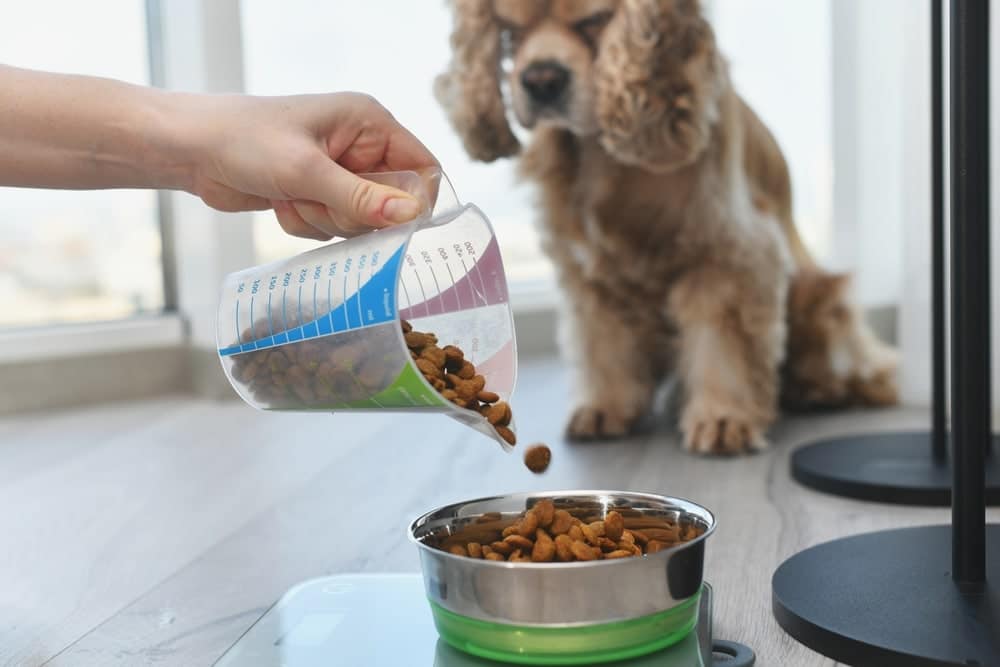All dogs need to eat, including those in shelters and rescues. However, dog food can be surprisingly expensive when you’re feeding dozens of dogs at a shelter. Fortunately, dog food drives can be a great way to collect food from the local community.
Usually, these drives are a one-off event, but they can take place annually at certain intervals. Either way, planning a dog food drive properly is essential to its success. We will discuss some important points that you should keep in mind while planning and conducting a dog food drive.


The 9 Tips for Holding a Dog Food Drive for a Rescue or Shelter
1. Set Goals
You might think that “as much as possible” might be a good goal. However, it is often best to choose an actual, exact goal. Your goals should be specific, measurable, and time-bound. You should have a specific amount of dog food that you are aiming for, as well as a deadline for that amount of dog food.
State this goal and keep track of it while driving. Having some visible way to track the goal can help motivate your team and donors. Goals can help increase motivation and help you get results.


2. Spread the Word
You want as many people to donate as possible, so spreading the word as much as possible is important. Your drive should be promoted through as many channels as you can muster. Social media is a huge channel to advertise these days, but traditional advertising with flyers and posters can also help you bring in more donations.
Ideally, you should advertise your food drive at least a month before it starts. This longer advertising period helps potential participants prepare and gives you time to get your ad in front of as many people as possible.
Spreading the word is the road to a successful trip, but there are also other pointers that you should not ignore.
While individual donations will drive most of your cause, pet-related businesses can also be big donors. Pet stores, grooming businesses, veterinary clinics, and other sponsors can donate large amounts of food in exchange for advertising at your drop-off point. You can meet a decent amount of your goal through sponsorship.
Plus, sponsors can help you advertise as well. They may post about your drive on their social media page, or they may allow you to post flyers at their business.


4. Provide Convenient Donation Options
More people are likely to donate if they don’t have to travel a long way. You should plan on setting up several convenient drop-off locations. If you can drop off boxes directly at the pet store, that’s the best option. People can buy food during their normal shopping and drop it off before they leave the store.
You can also set up boxes in highly trafficked areas. If there are any shopping centers near you, consider asking local businesses if they will allow you to set up a box outside their store. Of course, you should also have a shelter or rescue box.
For larger donations, consider having a pick-up option. While you can’t pick it up to everyone donation, large donations may require some assistance.
5. Give Specific Guidelines
Even if you don’t have many specific guidelines, you should provide details about what you do and don’t accept. Otherwise, people may not donate, even if you accept almost everything. Plus, a list of accepted items can help spark ideas for those reading your ad, prompting more donations.
Determine the exact type of food you allow, such as wet, dry, and specific brands. Even listing something like “all brands accepted” can help to avoid confusion. You should also specify if treats and other supplies are acceptable. Although this is a food drive, many people may have other supplies at home that they would like to donate as well.


6. Show Appreciation
Whatever someone brings, show appreciation for their donation. You should also express appreciation to people on social media. Posting regular posts of appreciation during the drive can also prompt more people to donate.
For larger donations, you can also send handwritten notes at a later date or give small tokens of appreciation. Even small things can make someone feel appreciated, increasing the chance for future donations.
7. Offer Incentives
If possible, you can also offer incentives and prizes for donations. If you partner with a local organization, you can offer a discount at a local store when a certain amount of dog food is donated. Possibly, you can also offer discounts to the community if your goal is met.
Sometimes, drives provide a raffle for larger donations, giving them a chance to win a prize.
In other words, if donors get something out of their donation, they are more likely to donate. They may also be more likely to make donations in the future, because they may feel more valued.


8. Host an Event
You can even host an event around the food drive. For example, you can organize a dog walk or a pet-themed night out. These events will attract more people, which increases donations. These events also help attract attention, which can increase donations even if people don’t attend the event.
You do not have to do this event only time donations are accepted (although you can make very short trips this way). However, even having an event in the middle of your drive can increase visibility and increase donations.
9. Work with Youth Groups
Often schools and youth groups love community service projects, including dog food drives. Spread the word about animal welfare at these organizations and see if they can help with your drive. Youth supporters can spread the word about the dog food drive, help collect donations, and even deliver donations to the shelter.
You can also ask youth groups to make flyers and posters used for advertisements. Many youth groups are focused on helping children and youth learn how to help their community, and dog food drives are a great way to help them achieve their goals as well.




Final Thoughts
Dog food drives are a great way to stock up on food for shelters and rescues. However, running them is more complicated than you might think. You need to consider how to advertise the dog food drive, how to collect donations, and how to encourage people to donate. Usually, there are a lot of moving parts involved, especially if it’s a larger drive.
Fortunately, there are many ways to find partners to help you accomplish all of this. Local shops and businesses will often provide space to advertise, place donation boxes, and may provide donations themselves. You should also consider joining local youth groups, especially during the summer months.
Featured Image Credit: Maximilian100, Shutterstock


